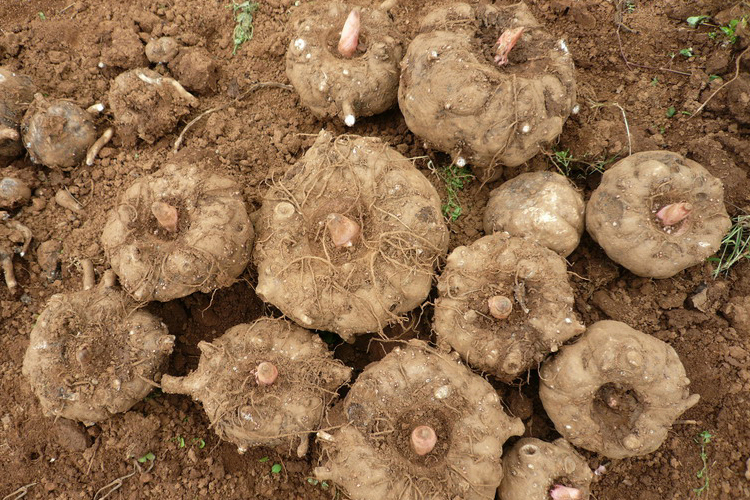Konjac, (scientific name Amorphophallus konjac), commonly known as konjac, is a perennial herb of the Araceae family, also known as demon taro in ancient China.

Konjac grows under sparse forests and is a beneficial alkaline food. For people who eat too much animal-based acidic food, eating konjac can achieve the acid-base balance of the food.

Konjac is rich in carbohydrates, low in calories, higher in protein than potatoes and sweet potatoes, rich in trace elements, and also contains vitamin A, vitamin B, etc., especially glucomannan, which has the functions of losing weight, lowering blood pressure, lowering blood sugar, and detoxification. Besides, konjac has laxatives, anti-cancer, add calcium, and other effects. That’s why since ancient times in China, konjac has been called “gut removal sand”.
The main products of konjac are konjac sponge, shirataki noodles, shrimp tofu noodles, konjac flour, konjac jelly, and konjac soluble fiber. The whole plant of konjac is poisonous, and the tuber is the most poisonous. It should not be eaten raw and must be processed before consumption. After eating konjac poisoning, the tongue and throat will be burning, itchy, and swollen. Folk use vinegar with a little ginger juice, orally or with a cough, to detoxify.

